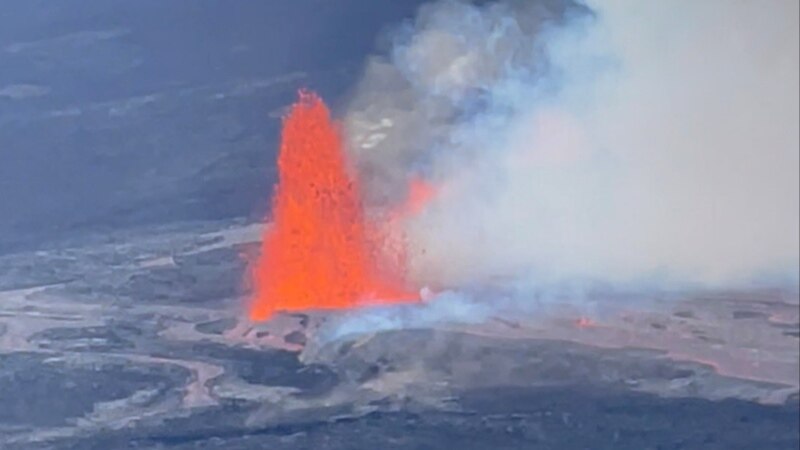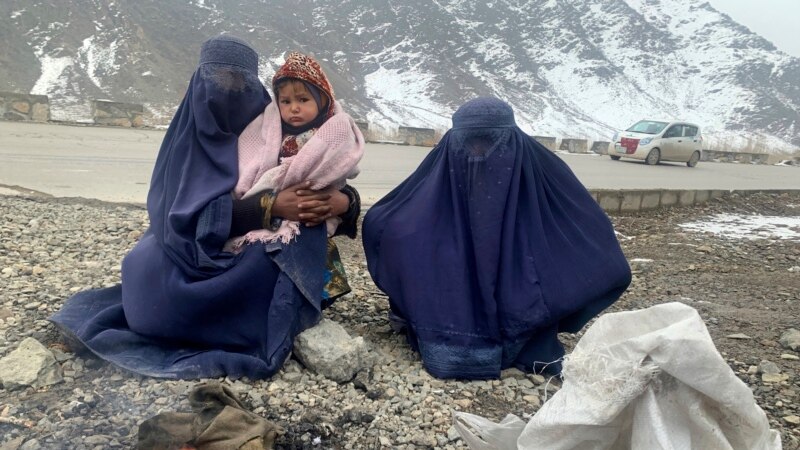
World’s Largest Volcano Erupts in Hawaii
Mauna Loa, the world’s largest active volcano, started erupting late Sunday in the U.S. island state of Hawaii in the Pacific Ocean.
The volcano last erupted 38 years ago. But it is not expected to put people in danger.
The volcano rises more than 4,000 meters above sea level. It is on the largest of the five main Hawaiian Islands, also called Hawaii or the “Big Island.” About 200,000 people live on the Big Island.
At this point, melted rock, called lava, is not expected to come near populated areas, but officials warned people to be ready to evacuate .
The U.S. Geological Survey, or USGS, said the path of lava flows can change quickly. Ken Hon is the chief scientist at the USGS’s Hawaiian Volcano Observatory. He said the eruption started on Sunday after a number of earthquakes.
Island officials warned people to stay away from the areas where lava is coming out because it can shoot 30 to 60 meters in the air. The gas coming from the eruption is also harmful. At the moment, however, the state said air quality on the island is good.
Hon said the eruption could last one to two weeks if it follows historical patterns .
Bobby Camara lives on the Big Island. He said he has seen the volcano erupt three times.
“I think everybody should be a little bit concerned,” he said. “We don’t know where the [lava] is going, we don’t know how long it’s going to last.”
Another resident, Gunner Mench, got an alert about the eruption on his phone on Sunday night. He and his wife went outside and could see a red glow over the island.
“Right now, it’s just entertainment,” he said, but he noted the concern that the lava could reach areas where people live.
The eruption is a new experience for many people on the island. There are more than twice as many people living there compared to the last time Mauna Loa erupted. State officials are most concerned about an area about 50 kilometers to the south of the volcano where about 5,000 people live.
Hon said the lava could flow toward the city of Hilo, which has about 45,000 people. That could take about a week.
Scientists say they hope the lava flows like it did in 1984, when it moved slowly.
There is some concern about weak areas on the southwestern part of the mountain. If lava escapes from that area, it could threaten places where people live in just hours or days. Hon said the lava has never come up through that area during past eruptions.
He said people living in those areas “do not have to worry about lava flows.”
The governor of Hawaii is David Ige. He said there might be some gas, ash and other material in the air due to the eruption. He asked people who have problems breathing to “take precautions .”
The Big Island mayor is Mitch Roth. He said the eruption “will be spectacular ,” but he does not think it will cause problems for people visiting Hawaii.
He said many people come to Hawaii to see volcanoes, but they have to travel a long way to a national park. Now, they can see an eruption much more easily.
“You can just look out your window at night and you’ll be able to see Mauna Loa erupting,” he said.
I’m Dan Friedell.
Dan Friedell adapted this story for VOA Learning English based on a report by the Associated Press.
Words in This Story
erupt –v. to send out rocks, ash and lava in a sudden explosion
evacuate –v. to move or be moved from a place for reasons of safety
pattern –n. a repeated way in which something happens
glow –n. to shine with a low light or heat
precaution –n. a safety measure taken in the event of an emergency or problem
spectacular –adj. causing wonder
We want to hear from you. What would you do if you were close to an erupting volcano?
We have a new comment system. Here is how it works:
Each time you return to comment on the Learning English site, you can use your account and see your comments and replies to them. Our comment policy is here .
Share this article:
This article uses material from the VOA Learning English article, and is in public domain. Images and videos are available under their respective licenses.


